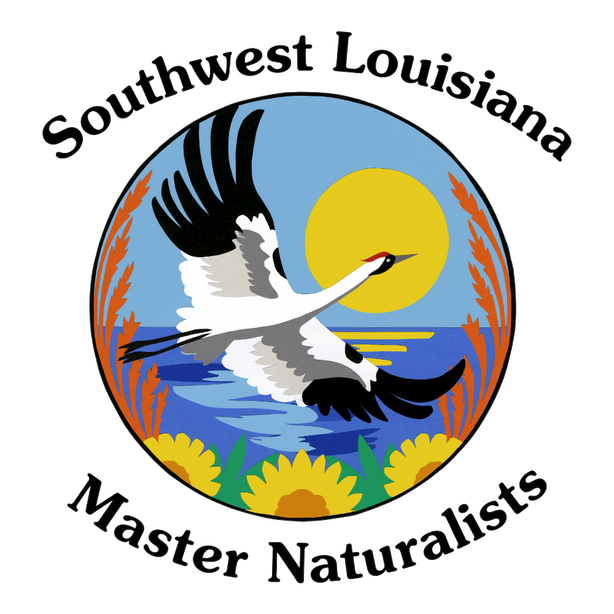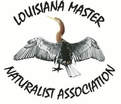|
On January 6, a strong cold front moved through Louisiana, bringing the coldest temperatures we’ve seen since at least 2015. Shortly before the front, I came across an article from the Lady Bird Johnson Wildflower Center about frostweed (Verbesina virginica) (Schwartzman 2017). Frostweed is one of a handful of plant species that exhibit the process of crystallofolia.
Crystallofolia, or ice flowers, is the process in which water is drawn up through the roots and through the stem of a perennial plant forming ribbons of ice during the first few hard freezes of the year (Harms, crystallofolia). The process through which this occurs is known as ice segregation, where above-freezing and below-freezing temperatures are juxtaposed (Carter, ice segregation). Only a few species of native plants in North America are known to produce ice flowers regularly among wild-growing populations. Among these are stone mint (Cunila origanoides), longbranch frostweed (Helianthemum canadense), frostweed (V. virginica), and sweetscent (Pluchea odorata). Hard freezes are rare in south Louisiana, so I decided that the morning of January 7 was the perfect opportunity to see crystallofolia for myself. After I described this phenomenon to Samantha, my fiancée, she decided to join me. I knew of a small patch of sweetscent within about a minute of the Tuten Park parking lot, so it would be easy to see the ice flowers and get back to the car if it turned out to be too cold for us. We made it out to the park at about 7:10 AM, and it was 25°F. I’m only familiar with sweetscent when it is flowering. In January, it was obviously dormant and looked like every other brown, dormant plant in the area to me. We looked over a few similarly sized plants and found no ice flowers. Then, we saw some white. As we moved closer, we could see a little patch of three sweetscents, each with an ice flower at its base. We crouched down in amazement, and I photographed them. Each ice flower was about 5 cm wide and about 3 cm tall. They were a lot thicker than many of the ice flower photographs I had seen online, but most of those are photographs of either stone mint or frostweed. Then we walked away to look at my planter box near the back gate of the park. It contains a mixture of native and non-native high-value pollinator plants. To my surprise, the tropical sage (Salvia coccinea) had also formed an ice flower. This was all along the lower foot or so of the stems of the largest plants. It had formed as if the water in the stem quickly cooled and a slow-motion explosion of ice occurred. This sighting was completely unexpected to me as I hadn’t read anything about this species of sage producing ice flowers. Later, I found a resource describing a crystallofolia-like process in cultivated tropical sage (Harms, Salvia coccinea). We continued our trek to the back of Tuten Park and observed no other ice flowers. Actually, the temperature seemed to rise as we entered the woods and seemed much warmer around the shoreline of the pond, a good example of a microclimate. There are several very good internet resources about crystallofolia and ice flowers, each from a different perspective. First, I’d encourage everyone to read the ice flower article that was featured in American Scientist (Carter 2013). Dr. Bob Harms put together an outstanding website about crystallofolia from a botanical perspective and from his observations in central Texas. Dr. Harms passed away in October 2016 and was a linguistics expert who transitioned to botany as Professor Emeritus. Dr. Jim Carter has a great website about many facets of ice, including ice segregation and ice flowers as well. I corresponded with Dr. Carter when compiling this article and his input was a big help in understanding the crystallofolia process. There is more information about ice flowers than I could include in this article since I also wanted to provide a narrative of my own ice flower observations. Visit Dr. Harms and Dr. Carter’s websites as they provide a wealth of information about this and other plant and ice segregation products. Citations: Carter, James R. 2013. Flowers and Ribbons of Ice. American Scientist. 101: 360. http://www.americanscientist.org/issues/feature/2013/5/flowers-and-ribbons-of-ice/1 Carter, James R. Ice Segregation. Personal Webpage. http://my.ilstu.edu/~jrcarter/ice/segregation/ Harms, Bob. Crystallofolia (‘Frost Flowers’), with stems of frostweed (Verbesina virginica) & marshfleabane (Pluchea odorata). Personal Webpage. http://w3.biosci.utexas.edu/prc/VEVI3/crystallofolia.html Harms, Bob. 2008. Salvia coccinea (Scarlet Sage), as a candidate for crystallofolia. Personal Webpage. http://w3.biosci.utexas.edu/prc/VEVI3/SACO5.html Schwartzman, Steven. 2017. The frost below. Wildflower News. Lady Bird Johnson Wildflower Center. https://news.wildflower.org/the-frost-below/
0 Comments
|
SWLA Master Naturalists talksArchives
April 2017
Categories |
 RSS Feed
RSS Feed

